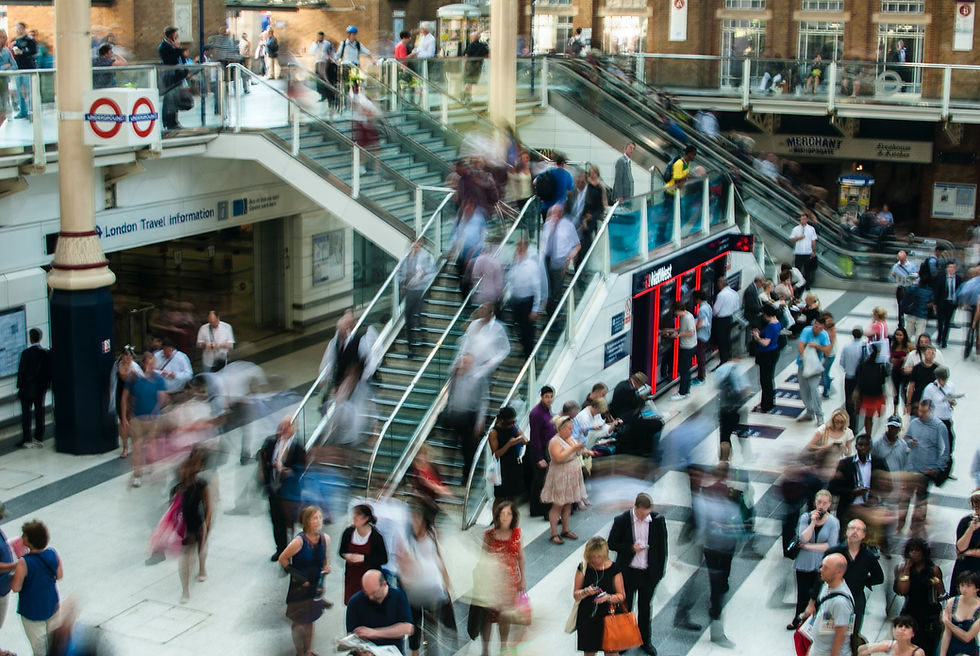The New Normal: How COVID-19 Shifted Digital Retail Trends
- Maggie Ryan
- Oct 26, 2023
- 3 min read
An analysis of the impact that the Covid-19 pandemic had on buying behaviors and consumption patterns, supported by data from the National Retail Federation’s 2020 report.

As humanity navigates the aftermath of the Covid-19 pandemic, the word "normal" is constantly being redefined. From our day-to-day routines to the way that industries and organizations operate, society has undergone significant change over the past few years which has inevitably shaped our behavior as consumers.
The rise of digital retail
Retail is the bread and butter of American consumption. According to the National Retail Foundation, “retail supports 52 million jobs and represents $3.9 trillion of annual GDP in the United States.”
With nearly every brick and mortar store being forced to shut down during the Covid pandemic, retailers were left with no other option than to digitize their sales strategies just to stay afloat. As lockdown measures start to loosen up, consumers were expected to flood stores and bask in their newfound freedom, but recent buying patterns have shown that ordering groceries from the comfort of our homes might actually be here to stay, forever.
While some people are craving the intimacy of an in-store shopping experience that online retailers just can’t provide, the vast majority of the population has been capitalizing on the advantages that online shopping yields such as protection
According to the National Retail Federation, the past few years in retail have been defined by surges in online sales, an unprecedented pivot to digital platforms that were once considered secondary channels.
The rapid advancement of technology
Technological advancements have also been at the forefront of the retail revolution. Technology is advancing at an exponential rate, and society is slowly being introduced to things that were nearly inconceivable just a couple of decades ago.
For example, Augmented Reality allows consumers to try on clothes virtually, saving the time that would have been lost driving to and fro or waiting in lines. Trying on clothes is convenient and even engaging with customer service representatives can be enjoyable at times, but do we really need to touch every apple on the shelf to decide which one is coming is coming home with us?
Similarly, Artificial Intelligence facilitates personalized shopping experiences that are tailored to the wants and needs of every individual client, making the sales process more straightforward than ever. Do we need to pay for parking just to pick up a roll of toilet paper or waste hours in traffic when we could order groceries online and have them appear on the doorstep before even closing the browser tab?
Understanding the consumer psyche
It is safe to say that the Covid-19 pandemic reshaped not only the physical but also the psychological landscape of shopping.
Now that stores have reopened their doors, most consumers actually prefer to shop from home to mitigate health concerns, capitalize on the convenience of hassle-free checkout and delivery, and compare prices online to make educated purchasing decisions.
Abnormal is the new normal
Some might call it laziness, some might fear detachment, but in general - the new wave of digital consumption has been widely accepted by both retailers and consumers.
In fact, online purchasing has even gone up since the “end” of the pandemic with the Kering Group reporting growth of about 67% as compared to levels during the pandemic.
Of course, there were significant losses over the two year period of retail closures and this growth is a reflection of a return to normal, but Bottega Veneta’s revenue hit an “all time high” of €1.5 billion in 2021 - proving that digital channels are here to stay, especially in the luxury sector.
In conclusion, the retail landscape has been irreversibly changed by the pandemic. As we navigate this retail revolution, understanding, adapting to, and anticipating technological trends will be critical for consumers and retailers alike.
The future of retail is not just about going digital, but rather, it is a dynamic reflection of modern consumers' evolving lifestyles and values.



Comments